
Federal Communications Commission FCC 24-69
Before the
Federal Communications Commission
Washington, D.C. 20554
In the Matter of
ASUSTeK Computer, Inc.
Asus Computer International
)
)
)
)
)
File No.: EB-SED-23-00035119
NAL/Acct. No.: 202432100003
FRNs: 0033432428
0033602921
NOTICE OF APPARENT LIABILITY FOR FORFEITURE
Adopted: June 13, 2024 Released: June 14, 2024
By the Commission: Commissioner Carr issuing a statement.
I. INTRODUCTION
1. We propose to assess a collective penalty of $367,436 against ASUSTeK Computer Inc.
(ASUSTeK Computer) and its wholly owned subsidiary, Asus Computer International (Asus Computer,
ASUSTeK Computer, and Asus Computer referred collectively as Company or ASUSTeK) for marketing
a WiFi adapter, the PCE-AC51, and a WiFi router, the GT-AXE11000 (GT-AXE), in apparent violation
of the Commission’s equipment marketing rules. ASUSTeK, without seeking the required authority from
the Commission, modified both equipment models to operate in excess of their previously authorized
power limits, in apparent violation of section 302(b) of the Communications Act of 1934, as amended,
(Act) and sections 2.803(b), 2.1043(a), and 15.407(a)(5) of the Commission’s rules.
1
Radio frequency
equipment capable of operating at excess power risks causing harmful interference to other radio
frequency devices. Moreover, violations of this type may give the violator an unfair competitive
advantage. For example, by circumventing the Commission’s equipment authorization process, marketers
of unlawful radio frequency devices may benefit from reduced costs as compared to their competitors that
market similar devices that are in compliance with the Commission’s rules.
2. ASUSTeK’s apparent violations here are very similar to previous violations to which
ASUSTeK Computer admitted to in a consent decree in 2014 with the Enforcement Bureau (Bureau).
2
In
the 2014 Consent Decree, ASUSTeK admitted to marketing WiFi routers and adapters, inter alia, that
were modified to exceed authorized power limits.
3
Here too, the present investigation has uncovered
apparent violations that ASUSTeK marketed a WiFi router and a WiFi adapter that were modified to
exceed authorized power limits. The record further indicates that ASUSTeK continued to market the GT-
AXE WiFi router for more than a year after it became aware that the model was noncompliant with its
authorization. For these and additional reasons set forth below, we propose that ASUSTeK pay a
forfeiture of $367,436, the statutory maximum fine calculated using our existing forfeiture calculation
methodology for equipment marketing violations.
3. Finally, we are concerned that in equipment marketing enforcement cases like this one—
with a small number of noncompliant equipment models but a large volume of units sold—our existing
“per-model” forfeiture calculation, even with substantial upward adjustments, may fail to yield an
1
47 U.S.C. § 302a(b); 47 CFR §§ 2.803(b), 2.1043(a), 15.407(a)(5).
2
ASUSTeK Computer, Inc., Order and Consent Decree, 29 FCC Rcd 9974 (EB 2014) (2014 Consent Decree).
3
Id. at 9978-79, paras. 5, 8 (admission of liability for violations of sections 2.803, 2.1043, 2.1093, 15.247, and
15.407 of the Commission’s rules).

Federal Communications Commission FCC 24-69
2
appropriate forfeiture amount. Accordingly, in future equipment marketing cases we may change our
methodology for calculating forfeitures in a way that better aligns forfeitures with the harms caused by
the underlying violations, including, where appropriate, increased forfeitures. Doing so would provide
stronger incentives to electronic equipment manufacturers and marketers to comply with the Act and the
Commission’s equipment marketing rules.
II. BACKGROUND
A. Legal Framework
4. The Act and the Commission’s equipment marketing rules collectively require marketers
of radio frequency devices to ensure, prior to advertising or selling such devices, that the devices will not
cause harmful interference to authorized radio communications.
4
Specifically, section 302(b) of the Act
provides that “[n]o person shall manufacture, import, sell, offer for sale, or ship devices or home
electronic equipment and systems, or use devices, which fail to comply with regulations promulgated
pursuant to this section.”
5
The Commission has promulgated long-standing regulations pursuant to
section 302(b) of the Act, including technical and authorization requirements, designed to prevent
interference from devices that emit radio frequency energy and to inform entities inside the United States
that wish to import, sell, or operate radio frequency equipment regarding whether the equipment has been
properly authorized.
5. Section 2.803(b)(1) of the Commission’s rules provides that no person may market a
radio frequency device that is subject to certification unless the device has been authorized in accordance
with the rules and is properly identified and labeled.
6
In the context of the Commission’s equipment
marketing rules, the term “marketing” means the “sale or lease, or offering for sale or lease, including
advertising for sale or lease, or importation, shipment, or distribution for the purpose of selling or leasing
or offering for sale or lease.”
7
6. Certification is an equipment authorization process that uses third-party, Commission-
recognized Telecommunication Certification Bodies to evaluate applications submitted by responsible
parties (e.g., manufacturers or importers) to determine whether a radio frequency device meets the
Commission’s technical requirements for authorization.
8
Intentional radiators must be properly
authorized and labeled in accordance with the Commission’s equipment certification process prior to
marketing.
9
Once a device is certified, section 2.1043(a) of the Commission’s rules prohibits, inter alia,
4
47 U.S.C. § 302a(b); 47 CFR § 2.803; see, e.g., Sound Around, Inc., Notice of Apparent Liability for Forfeiture,
FCC 23-113, 2023 WL 8782439 (Dec. 14, 2023) (Sound Around 2023 NAL); Sound Around, Inc., Notice of
Apparent Liability for Forfeiture, 35 FCC Rcd 3478 (2020) (Sound Around 2020 NAL), forfeiture ordered,
Forfeiture Order, 37 FCC Rcd 9907 (2022) (Sound Around 2022 Forfeiture Order); ABC Fulfillment Services LLC
d/b/a HobbyKing USA LLC and HobbyKing.com, and Indubitably, Inc. d/b/a/ HobbyKing Corp., HobbyKing USA
LLC, HobbyKing and HobbyKing.com, Forfeiture Order, 35 FCC Rcd 7441, 7442, para. 5 (2020).
5
47 U.S.C. § 302a(b).
6
See 47 CFR § 2.803(b)(1).
7
Id. § 2.803(a).
8
See id. § 2.907. The Commission’s equipment certification procedures are set forth in part 2, subpart J, of the
Commission’s rules. See id. §§ 2.901-2.1093.
9
See id. § 2.803(b)(1). An intentional radiator is “[a] device that intentionally generates and emits radio frequency
energy by radiation or induction.” Id. § 15.3(o). Both the PCE-AC51 and the GT-AXE are “intentional radiators”
under part 15 of the Commission’s rules because both models intentionally generate and emit radio frequency
energy by radiation. See id. “[A]ll intentional radiators operating under the provisions of this part shall be certified
by the Telecommunication Certification Bodies pursuant to the procedures in subpart J of part 2 of this chapter prior
to marketing.” Id. § 15.201(b).

Federal Communications Commission FCC 24-69
3
changes to its maximum power without application for and authorization of a new grant of certification.
10
Section 15.407(a)(5) of the Commission’s rules states that “[f]or an indoor access point operating in the
5.925-7.125 GHz band, the maximum power spectral density must not exceed 5 dBm e.i.r.p. in any 1-
megahertz band, and the maximum e.i.r.p. over the frequency band of operation must not exceed
30 dBm.”
11
B. Factual Background
1. ASUSTeK Computer and Asus Computer
7. ASUSTeK Computer is a Taiwanese multinational corporation and one of the world’s
largest providers of computer and computer component-related products. In 2022, ASUSTeK Computer
had operating revenues of $17.2 billion (New Taiwan (NT) $537 billion) and gross profits of $2.4 billion
(NT $74 billion).
12
ASUSTeK Computer markets its products (including the PCE-AC51 and the GT-
AXE) in the United States through its wholly owned U.S. affiliate, Asus Computer.
13
Specifically, Asus
Computer markets and distributes in the United States the products at issue here.
14
ASUSTeK Computer
received and holds the underlying equipment authorizations for the PCE-AC51 and GT-AXE.
15
Employees of ASUSTeK Computer signed the declarations supporting the LOI Responses on behalf of
both companies.
16
This interrelationship between the two companies extends to certain common officers
and directors.
17
2. The 2014 Consent Decree
8. On August 6, 2014, ASUSTeK Computer entered into the 2014 Consent Decree with the
Bureau, resolving the Bureau’s investigation of violations very similar to those that are the subject of this
NAL, namely the marketing of WiFi adapters and routers that exceed their authorized power limits in
violation of section 302(b) of the Act and sections 2.803, 2.1043, and 15.407 of the Commission’s rules.
18
In the 2014 Consent Decree, ASUSTeK Computer agreed to, inter alia, adopt and implement a 38-month
compliance plan “to ensure future compliance with the Communications Laws and with the terms and
10
See id. § 2.1043(a).
11
Id. § 15.407(a)(5). Effective Isotropic Radiated Power (e.i.r.p.) is the radiated output power of an antenna
calculated by using the transmitter output power, cable loss, and antenna gain.
12
See ASUSTeK Computer, Inc. 2022 Annual Report at 154 (listing 2022 operating revenues and gross profits),
https://www.asus.com/EVENT/Investor/Content/attachment_en/2022_Annual_Report_en.pdf
(last visited May 9,
2024) (2022 Annual Report).
13
Initial Response to Letter of Inquiry (Revised), from ASUSTeK Computer, Inc., and Asus Computer
International, to Spectrum Enforcement Division, FCC Enforcement Bureau, at 5, Response to Inquiry 1 (June 14,
2023) (on file in EB-SED-23-00035119) (LOI Response).
14
LOI Response at 5, 12, Response to Inquiry 1, 8.
15
See LOI Response at 11, Response to Inquiry 6; LOI Response at Exhibit 2; infra at notes 22 & 27.
16
See LOI Response, Declarations of Alan Huang and Also Lo; Response to Follow-up Letter of Inquiry, from
ASUSTeK Computer, Inc., and Asus Computer International, to Spectrum Enforcement Division, FCC Enforcement
Bureau at Declarations of Alan Huang and Also Lo (Nov. 3, 2023) (on file in EB-SED-23-00035119) (FLOI
Response); Supplemental Response to Follow-up Letter of Inquiry, from ASUSTeK Computer, Inc., and Asus
Computer International, to Spectrum Enforcement Division, FCC Enforcement Bureau at Declaration of Also Lo
(Dec. 1, 2023) (on file in EB-SED-23-00035119) (FLOI Response Supplement).
17
S.Y. Hsu (Shian) serves as Director, Co-Chief Executive Officer, for ASUSTeK Computer and as Director for
Asus Computer. See LOI Response at 6, 9, Response to Inquiry 2. Joe Hsieh serves as Director, Chief Operating
Officer of ASUSTeK Computer and as Director of Asus Computer. See id.
18
See generally 2014 Consent Decree, supra note 2.
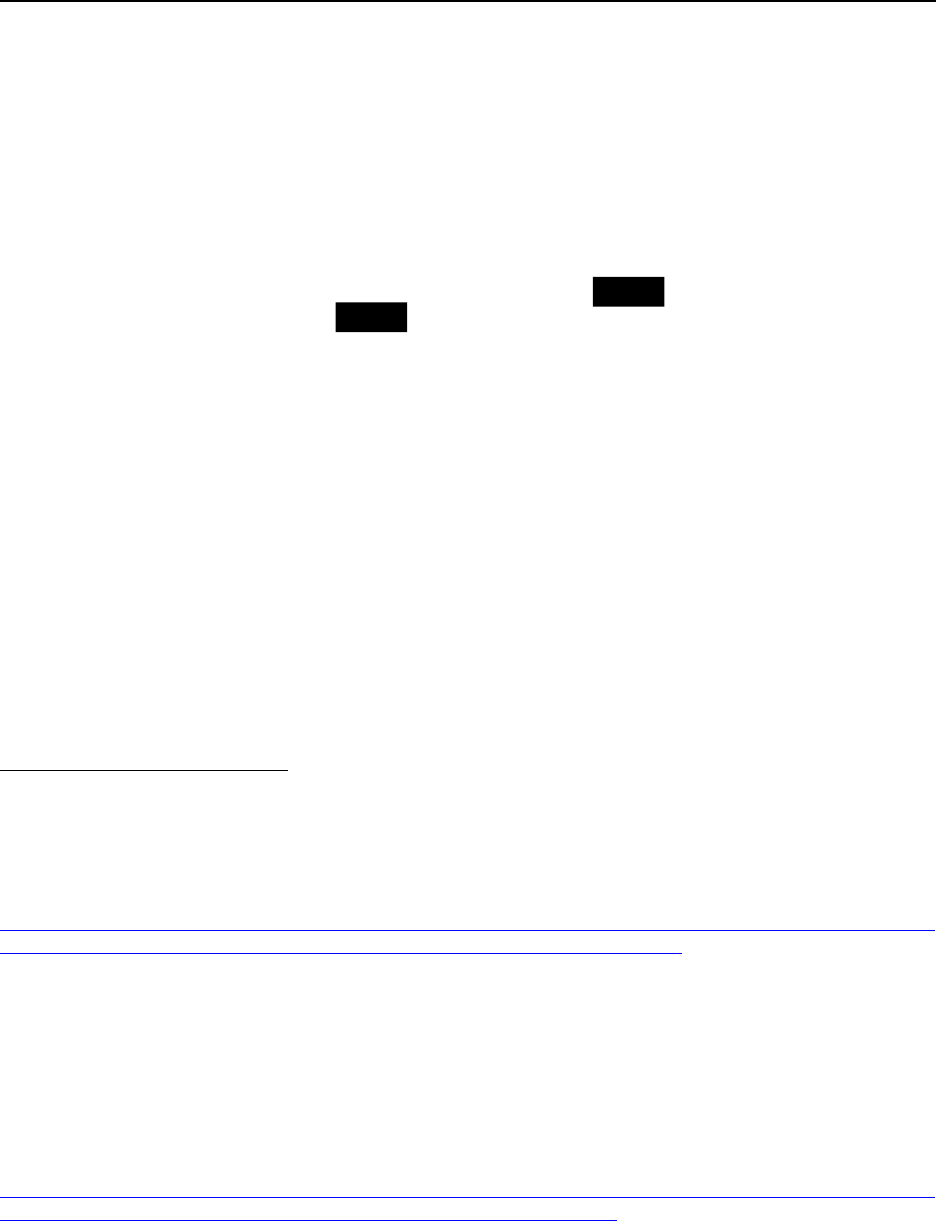
Federal Communications Commission FCC 24-69
4
conditions of this Consent Decree.”
19
It also agreed to “report any noncompliance with the Equipment
Marketing Rules . . . within fifteen (15) calendar days after discovery of such noncompliance.”
20
ASUSTeK Computer further agreed to pay a $240,000 civil fine.
21
3. The PCE-AC51 WiFi Adapter
9. On October 3, 2016, the Commission granted ASUSTeK an authorization for the PCE-
AC51, with an authorized maximum power level of 0.187 Watts (the equivalent of 22.7 dBm).
22
On
November 11, 2016, ASUSTeK began marketing the PCE-AC51.
23
On September 20, 2023, ASUSTeK
stopped sales and marketing of the PCE-AC51.
24
In the last year in which it marketed the model,
ASUSTeK sold 3,281 noncompliant units with gross revenues of {[ ]} from which ASUSTeK
generated estimated gross profits of {[ ]}.
25
It was not until November 3, 2023, that ASUSTeK
admitted it had modified the PCE-AC51 at some point after initial testing, but before marketing the
device, so that on certain frequencies the model could operate at “up to 23 dBm” (the equivalent of
0.200 Watts).
26
In other words, the model was apparently operating above its authorized power level by
0.013 Watts (or approximately seven percent).
4. The GT-AXE WiFi Router
10. On August 4, 2020, the Commission granted ASUSTeK an authorization for the GT-
AXE, with an authorized maximum power level between 0.242 and 0.991 Watts.
27
On January 21, 2021,
ASUSTeK began marketing the model in the United States.
28
However, at some point after initial testing,
ASUSTeK (directly or through its contractor) made changes to the model, such that the model exceeded
the power limits in its authorization since at least November 1, 2021.
29
11. Subsequently, the Bureau received a complaint (Complaint) stating that the complainant
purchased three off-the-shelf GT-AXE units and had them tested by a certified test laboratory.
30
According to the Complaint, all three units exceeded the model’s authorized power output limits by
between 4 and 9 dB.
31
In other words, the units were apparently operating at nearly eight times the
authorized output power level on some frequencies.
19
Id. at 9980, 9982, paras. 12, 15.
20
Id. at 9981, para. 13.
21
Id. at 9982, para. 16.
22
Authorization for FCC ID MSQ-PCEAC1N00, (Oct. 3, 2016),
https://apps.fcc.gov/oetcf/tcb/reports/Tcb731GrantForm.cfm?mode=COPY&RequestTimeout=500&tcb_code=&app
lication_id=WXOLXxL5UmR4tkznvVNnuw%3D%3D&fcc_id=MSQ-PCEAC1N00.
23
FLOI Response, supra note 16, at 4, Response to FLOI Inquiry 5(d).
24
Id. at 5, Response to FLOI Inquiry 5(d).
25
See FLOI Response Supplement, supra note 16, Spreadsheet Exhibit 1. Material that is set off by double brackets
{[ ]} is subject to a request for confidential treatment and is redacted from the public version of this document.
26
FLOI Response, supra note 16, at 1-2, Response to FLOI Inquiry 3, 3(a) (admitting that “the PCE-AC51 is
capable of operating up to 23 dBm in certain frequency ranges.”).
27
Authorization for FCC ID MSQ-RTAXJF00, (Aug. 4, 2020),
https://apps.fcc.gov/oetcf/tcb/reports/Tcb731GrantForm.cfm?mode=COPY&RequestTimeout=500&tcb code=&app
lication id=PF9vm2eioKqJjrbIhlU0Kg%3D%3D&fcc id=MSQ-RTAXJF00.
28
LOI Response, supra note 13, at 16, Response to Inquiry 15(d).
29
Id. at 19, Response to Inquiry 18.
30
See Complaint (on file in EB-SED-23-00035119).
31
Id.
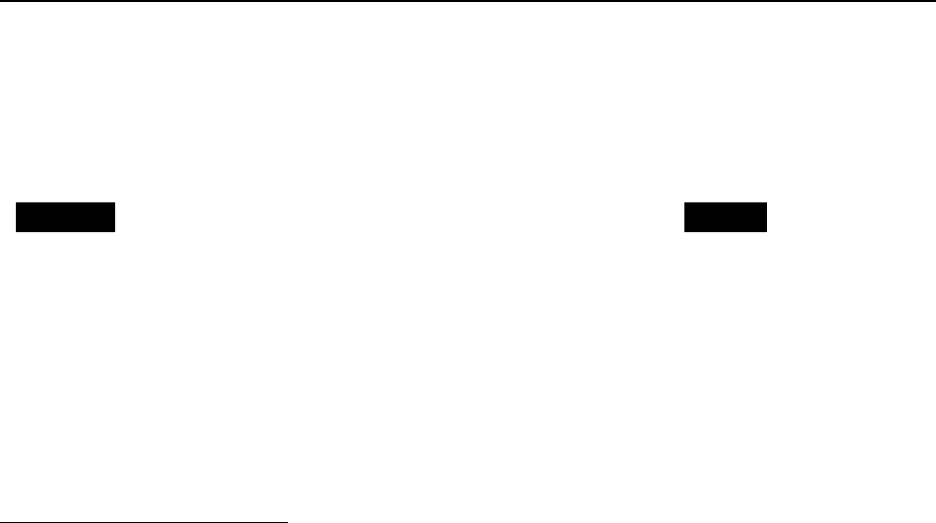
Federal Communications Commission FCC 24-69
5
12. On November 19, 2021, Netgear, Inc. (Netgear), a major competitor of ASUSTeK in the
wireless router market, filed a lawsuit against ASUSTeK in the U.S. District Court for the Northern
District of California alleging, inter alia, that ASUSTeK was marketing the GT-AXE beyond its
authorized power limits, in violation of the Commission’s rules.
32
On January 10, 2023, more than a year
after Netgear sued ASUSTeK, ASUSTeK stopped accepting new orders for the model.
33
Between May 8,
2022,
34
and January 16, 2023, ASUSTeK sold 4,495 noncompliant units with gross revenues of
{[ ]} from which ASUSTeK generated estimated gross profits of {[ ]}.
35
On February
1, 2023, nearly 14 months after Netgear filed its lawsuit, ASUSTeK met with the Commission’s Office of
Engineering and Technology (OET) to inform OET of the GT-AXE’s noncompliance and discuss steps
needed to bring the model into full compliance.
36
ASUSTeK has admitted that it marketed the GT-AXE
outside of the parameters of the Commission’s authorization.
37
ASUSTeK reported that on June 19,
2023, it brought the GT-AXE into compliance with the device model’s authorized power limits.
38
On
March 6, 2024, ASUSTeK informed the Commission that it intended to resume marketing the GT-AXE.
39
5. Investigative History
13. On April 10, 2023, the Bureau sent ASUSTeK a Letter of Inquiry (LOI) requesting
information regarding the GT-AXE model, as well as all other wireless routers and WiFi boosters that
ASUSTeK sold in the United States.
40
ASUSTeK responded on May 17,
41
June 14,
42
and July 19, 2023.
43
32
Complaint, Netgear, Inc. v ASUSTeK Computer, Inc. and Asus Computer International, Inc., Case 5:21-cv-08993-
NC (N.D. Ca1.) (filed Nov. 19, 2021); LOI Response at 12-13, Response to Inquiry 10; Ex. 3(A). On May 30, 2023,
ASUSTeK and Netgear entered into a settlement agreement voluntarily dismissing Netgear’s claims against
ASUSTeK. See LOI Response, supra note 13, at 13, Response to Inquiry 10; Exs. 3(A), 3(B).
33
LOI Response, supra note 13, at 14, Response to Inquiry 12.
34
On May 8, 2023, ASUSTeK and the Bureau entered into a tolling agreement which tolled the statute of limitations
until June 14, 2024, related to the Bureau’s investigation of potential violations into ASUSTeK’s marketing of the
GT-AXE. See infra note 49.
35
See FLOI Response Supplement, supra note 16, Spreadsheet Exhibit 1.
36
See LOI Response, supra note 13, at 14, Response to Inquiry 12.
37
Id. at 19, Response to Inquiry 18 (“During the Inquiry Period, the GT-AXE was capable of operating at a higher
power level than what was specified in the original equipment authorization.”). ASUSTeK also admitted during the
course of its litigation with Netgear that the GT-AXE was noncompliant with its authorization. See id., Ex. 3(B),
“Joint Case Management Statement” at 2 (Apr. 14, 2023) (ASUSTeK informed the court “that the [GTE-AXE]’s
maximum power . . . exceeds the FCC maximum output level of 5 dBm/MHz in the 6 GHz band.”) (citing 47 CFR §
15.407(a)(5)).
38
See Supplemental Response to Letter of Inquiry, from ASUSTeK Computer, Inc., and Asus Computer
International, Spectrum Enforcement Division, FCC Enforcement Bureau, at 1 (July 19, 2023) (on file in EB-SED-
23-00035119) (LOI Response Supplement).
39
See Further Supplemental Response to Follow-up Letter of Inquiry, from ASUSTeK Computer, Inc., and Asus
Computer International, to Spectrum Enforcement Division, FCC Enforcement Bureau, at 1 (Mar. 6, 2024) (on file
in EB-SED-23-00035119) (FLOI Further Response Supplement).
40
Letter of Inquiry from Spectrum Enforcement Division, FCC Enforcement Bureau, to ASUSTeK Computer, Inc.,
and Asus Computer International (Apr. 10, 2023) (on file in EB-SED-23-00035119) (LOI).
41
Initial Response to Letter of Inquiry, from ASUSTeK Computer, Inc., and Asus Computer International, to
Spectrum Enforcement Division, FCC Enforcement Bureau (May 17, 2023) (on file in EB-SED-23-00035119).
Because ASUSTeK submitted a revised version of its LOI Response, we cite primarily to that version. See supra
note 13.
42
LOI Response, supra note 13.
43
See generally LOI Response Supplement.

Federal Communications Commission FCC 24-69
6
On October 20, 2023, the Bureau sent ASUSTeK a Follow-up LOI (FLOI).
44
ASUSTeK submitted
responses on November 3,
45
and December 1, 2023,
46
and on March 6, 2024.
47
III. DISCUSSION
14. We find that ASUSTeK apparently willfully and repeatedly violated section 302(b) of the
Act and sections 2.803(b), 2.1043(a), and 15.407(a)(5) of the Commission’s rules when the Company
marketed the PCE-AC51 WiFi adapter and the GT-AXE WiFi router in excess of the models’ authorized
power limits.
48
Such violations risk causing harmful interference to other radio frequency devices and
unfairly give a violating company a competitive advantage over other companies marketing similar
devices while adhering to the Commission’s equipment marketing rules. We also find that significant
upward adjustments to the base forfeiture amount are warranted because (i) these violations followed
similar, prior violations to which ASUSTeK admitted in its 2014 Consent Decree with the Bureau, and
(ii) ASUSTeK continued marketing the GT-AXE for more than a year after ASUSTeK became aware of
allegations that the model was noncompliant with its authorization. Accordingly, we propose a forfeiture
of $367,436, the aggregate statutory maximum under the Commission’s current forfeiture calculation
methodology, for the apparent violations for the two equipment models that occurred within the one-year
statute of limitations.
49
A. ASUSTeK Marketed Noncompliant Radio Frequency Equipment in Apparent
Violation of Section 302(b) of the Act and Sections 2.803(b), 2.1043(a), and
15.407(a)(5) of the Commission’s Rules
15. Devices that unintentionally or intentionally emit radio frequency energy typically must
be authorized in accordance with the Commission’s rules prior to their being advertised or sold in the
United States.
50
Specifically, section 302(b) of the Act provides that “[n]o person shall manufacture,
import, sell, offer for sale, or ship devices or home electronic equipment and systems, or use devices,
which fail to comply with regulations promulgated pursuant to this section.”
51
Section 2.803(b)(1) of the
Commission’s rules provides that no person may market a radio frequency device that is subject to
certification unless the device has previously been authorized in accordance with the rules and is properly
identified and labeled.
52
Section 2.1043(a) of the Commission’s rules provides in relevant part that
changes to maximum power ratings shall not be performed without application for and authorization of a
new grant of certification.
53
Section 15.407(a)(5) of the Commission’s rules, which applies to the GT-
44
Follow-up Letter of Inquiry, from Spectrum Enforcement Division, FCC Enforcement Bureau, to ASUSTeK
Computer, Inc., and Asus Computer International (Oct. 20, 2023) (on file in EB-SED-23-00035119) (FLOI).
45
See generally FLOI Response, supra note 16.
46
See generally FLOI Response Supplement, supra note 16.
47
See generally FLOI Further Response Supplement, supra note 39.
48
47 U.S.C. § 302a(b); 47 CFR §§ 2.803(b), 2.1043(a), 15.407(a)(5).
49
47 U.S.C. § 503(b)(6)(B). The one-year statute of limitations for the PCE-AC51 runs from September 20, 2023,
the date that ASUSTeK stopped marketing the model, to September 19, 2024. See supra para. 9. The one-year
statute of limitations for the GT-AXE that would have run from January 16, 2023, the date that ASUSTeK stopped
marketing the model, to January 15, 2024, was extended by a tolling agreement that expires on June 14, 2024. See
supra para. 12 and note 34.
50
See 47 CFR part 2, subpart I.
51
47 U.S.C. § 302a(b); supra para. 4.
52
47 CFR § 2.803(b)(1); supra para. 5.
53
47 CFR § 2.1043(a); supra para. 6.
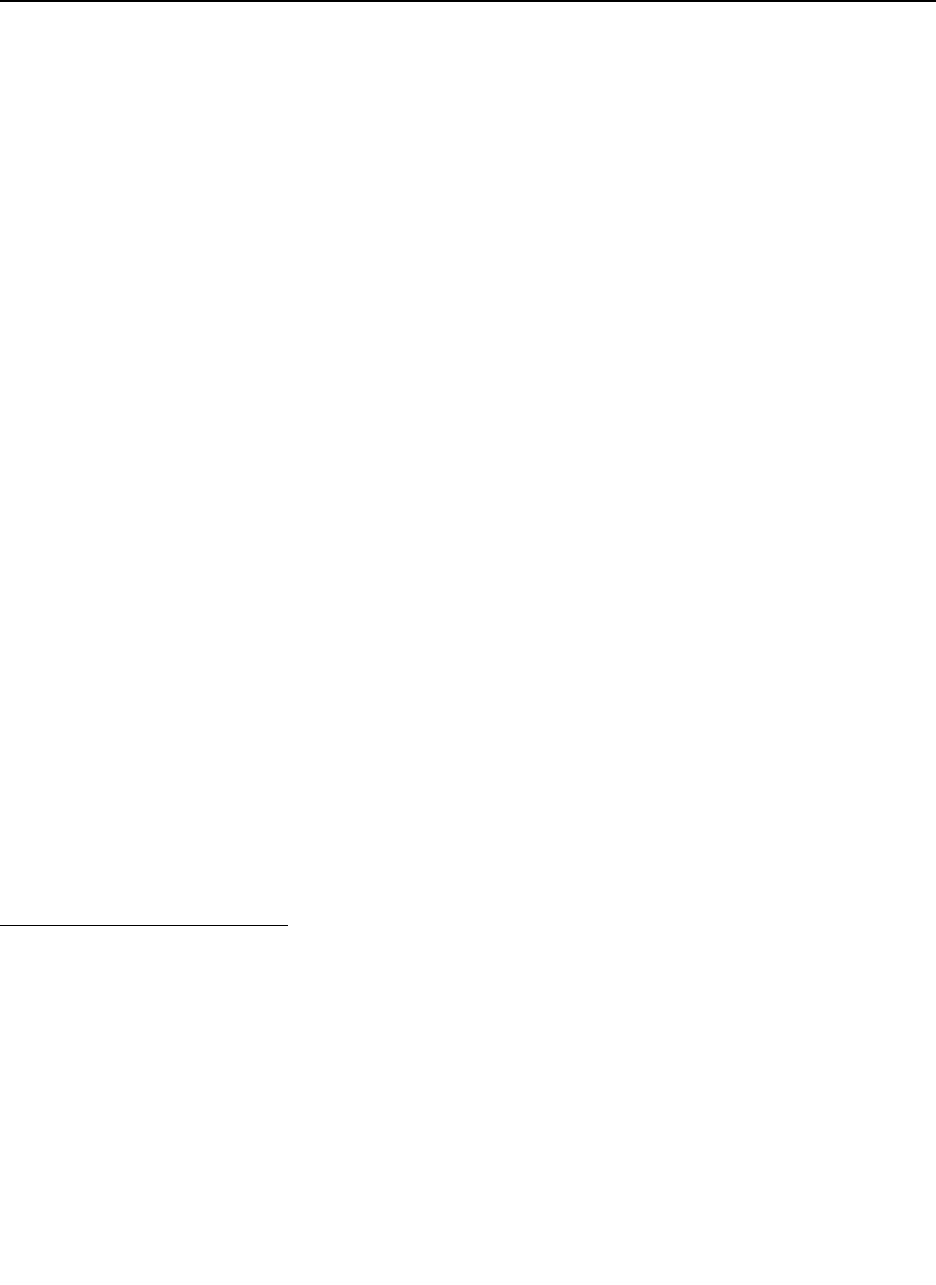
Federal Communications Commission FCC 24-69
7
AXE, establishes a maximum power density for indoor operations.
54
Because ASUSTeK increased the
power limits of the PCE-AC51 and GT-AXE models beyond each device model’s authorized levels
without applying for and receiving a new grant of certification, the models were unauthorized.
55
Accordingly, ASUSTeK marketed the PCE-AC51 and GT-AXE models in apparent willful and repeated
violation of section 302 of the Act and sections 2.803(b), 2.1043(a), and—with respect to the GT-AXE
model—15.407(a)(5) of the Commission’s rules.
56
16. ASUSTeK marketed the PCE-AC51 in apparent violation of the Act and the
Commission’s rules. The Commission certified the PCE-AC51 on October 3, 2016, with an authorized
maximum power level of 0.187 Watts (the equivalent of 22.7 dBm).
57
Approximately one month later,
ASUSTeK began marketing the PCE-AC51 wireless adapter in the United States and continued to do so
for almost seven years.
58
The Bureau’s investigation revealed that, during the entire time ASUSTeK
marketed the PCE-AC51, it could operate at up to 23 dBm (the equivalent of 0.200 Watts), in excess of
its Commission-authorized power limits.
59
ASUSTeK never sought nor received a new grant of
certification for these higher power levels. Accordingly, ASUSTeK apparently willfully and repeatedly
violated section 302(b) of the Act and sections 2.803(b) and 2.1043(a) of the Commission’s rules by
marketing the PCE-AC51 in violation of its authorized power limits.
17. ASUSTeK also marketed the GT-AXE wireless router in apparent violation of the Act
and the Commission’s rules. The Commission certified the GT-AXE on August 4, 2020.
60
About five
months later, ASUSTeK began marketing the GT-AXE wireless router in the United States.
61
Section
15.407(a)(5) limits the allowed power spectrum density for “indoor access points” like the GT-AXE to
5 dBm/MHz.
62
ASUSTeK has admitted that it continuously marketed the GT-AXE in excess of this limit
since at least November 1, 2021.
63
ASUSTeK neither sought nor received a new grant of certification for
these higher power levels prior to marketing. Accordingly, ASUSTeK apparently willfully and
repeatedly violated section 302(b) of the Act and sections 2.803(b), 2.1043(a), and 15.407(a)(5) of the
Commission’s rules by marketing the GTE-AXE with power spectrum density output in excess of
allowable levels.
B. Proposed Forfeiture
18. Section 503(b) of the Act authorizes the Commission to impose a forfeiture against any
entity that “willfully or repeatedly fail[s] to comply with any of the provisions of [the Act] or of any rule,
regulation, or order issued by the Commission[.]”
64
Here, section 503(b)(2)(D) of the Act authorizes us to
assess a forfeiture against ASUSTeK of up to $24,496 for each day of a continuing violation, up to a
54
47 CFR § 15.407(a)(5); supra para. 6.
55
See supra paras. 9-12.
56
47 U.S.C. § 302a(b); 47 CFR §§ 2.803(b)(1), 2.1043(a), 15.407(a)(5).
57
See supra para. 9 and note 22.
58
FLOI Response, supra note 16, at 5, Response to FLOI Inquiry 5(d).
59
See, e.g., id. at 1, Response to FLOI Inquiry 3.
60
See supra para. 10 and note 27.
61
LOI Response, supra note 13, at 16, Response to Inquiry 15(d).
62
47 CFR § 15.407. An “indoor access point” is “an access point that operates in the 5.8505.895 GHz or the
5.9257.125 GHz band, is supplied power from a wired connection, has an integrated antenna, is not battery powered,
and does not have a weatherized enclosure.” Id. § 15.403. The GT-AXE is such a device. See supra note 27.
63
LOI Response, supra note 13, at 12-13, Response to Inquiry 10; Ex. 3(A).
64
47 U.S.C. § 503(b).
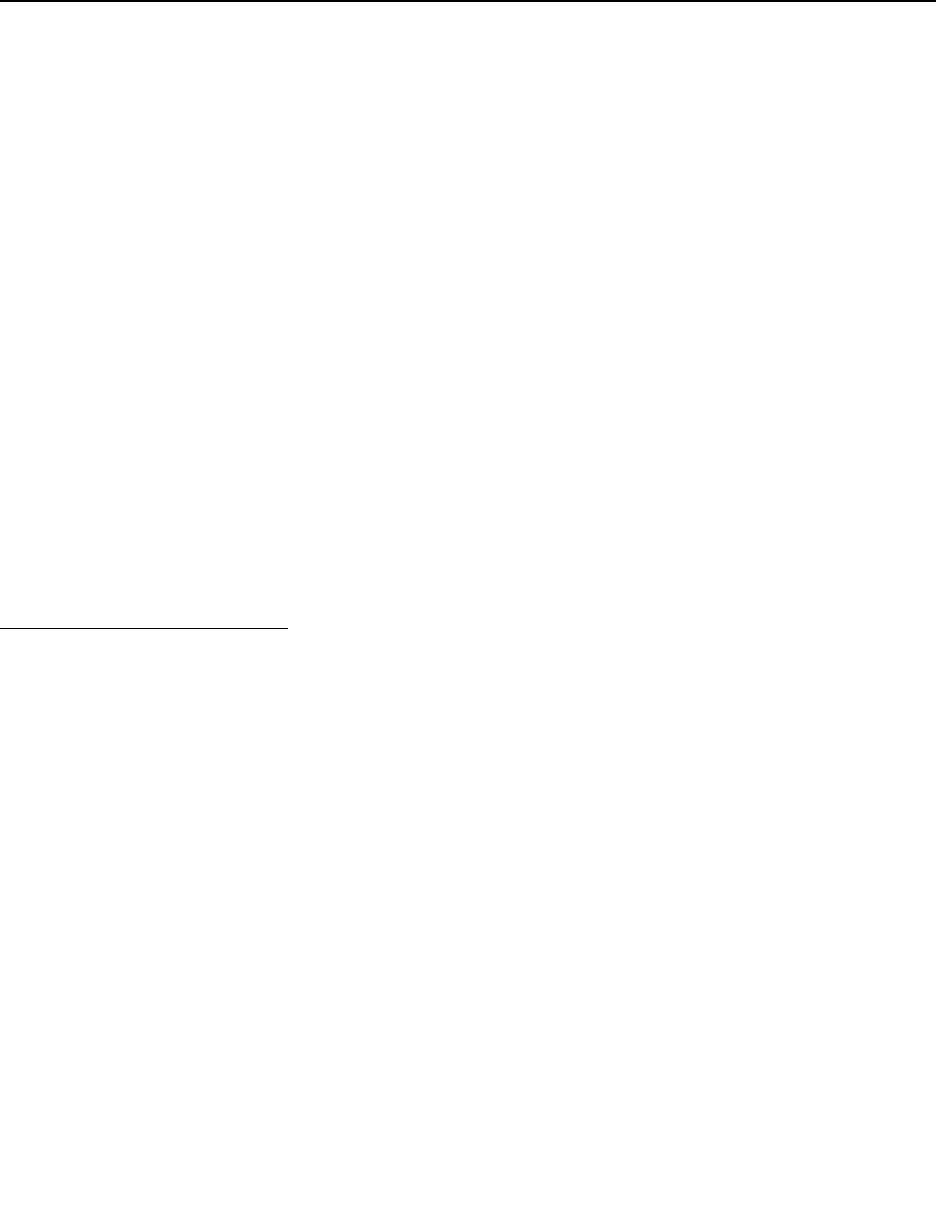
Federal Communications Commission FCC 24-69
8
statutory maximum of $183,718 for a single act or failure to act.
65
In exercising our forfeiture authority,
we must consider the “nature, circumstances, extent, and gravity of the violation and, with respect to the
violator, the degree of culpability, any history of prior offenses, ability to pay, and such other matters as
justice may require.”
66
In addition, the Commission has established forfeiture guidelines, which provide
base penalties for certain violations and identify criteria that we consider when determining the
appropriate penalty in any given case.
67
Under these guidelines, we may adjust a forfeiture upward for
violations that are egregious, intentional, or repeated, or that cause substantial harm or generate
substantial economic gain for the violator.
68
19. Section 1.80(b) of the Commission’s rules sets a base forfeiture of $7,000 for marketing
of unauthorized equipment for each violation or each day of a continuing violation.
69
Based on the
record, ASUSTeK marketed two noncompliant radio frequency device models during the entirety of the
one-year statute of limitations period.
70
Accordingly, we propose a total base forfeiture of $14,000 (2 x
$7,000).
20. In addition, given the totality of the circumstances, and consistent with the Forfeiture
Policy Statement, we conclude that a significant upward adjustment is warranted for ASUSTeK’s
(i) intentional marketing of noncompliant radio frequency devices; (ii) history of prior violations of the
Act and the Commission’s rules; (iii) repeated and continuous noncompliant marketing; (iv) substantial
economic gain; and (v) ability to internalize the costs of more modest proposed forfeitures as a mere cost
of doing business (i.e., ability to pay).
71
65
See 47 U.S.C. § 503(b)(2)(D); 47 CFR § 1.80(b)(10) (setting the current inflation adjusted statutory maximum for
a violation of 47 U.S.C. § 503 (b)(2)(D) at $183,718). See Amendment of Section 1.80(b) of the Commission’s
Rules, Adjustment of Civil Monetary Penalties to Reflect Inflation, Order, DA 23-1198, 2023 WL 8889597 (EB Dec.
22, 2023); see also Annual Adjustment of Civil Monetary Penalties to Reflect Inflation, 89 Fed. Reg. 2148 (Jan. 12,
2024) (setting January 15, 2024 as the effective date for the increases).
66
47 U.S.C. § 503(b)(2)(E); see also 47 CFR § 1.80(b)(11); The Commission’s Forfeiture Policy Statement and
Amendment of Section 1.80 of the Rules to Incorporate the Forfeiture Guidelines, Report and Order, 12 FCC Rcd
17087, 17100-17101, para. 27 (1997) (Forfeiture Policy Statement), recons. denied, 15 FCC Rcd 303 (1999).
67
47 CFR § 1.80(b)(11), Table 1 to paragraph (b)(11); Forfeiture Policy Statement, 12 FCC Rcd at 17098-99, para.
22.
68
See 47 CFR § 1.80(b)(11), Table 3 to paragraph (b)(11); see also Forfeiture Policy Statement, 12 FCC Rcd at
17098-99, para. 22 (noting that “[a]lthough we have adopted the base forfeiture amounts as guidelines to provide a
measure of predictability to the forfeiture process, we retain our discretion to depart from the guidelines and issue
forfeitures on a case-by-case basis, under our general forfeiture authority contained in Section 503 of the Act”).
69
47 CFR § 1.80(b). The Commission typically applies the base forfeiture on a per-model basis and proposes to do
so here. See, e.g., Bear Down Brands, LLC d/b/a Pure Enrichment, Notice of Apparent Liability for Forfeiture, 33
FCC Rcd 5449, 5457, para. 22 (2018) (Pure Enrichment NAL); C.T.S. Technology Co., et al., Notice of Apparent
Liability for Forfeiture, 29 FCC Rcd 8107, 8113, para. 16 & n.38 (2014) (citing cases), forfeiture ordered, 31 FCC
Rcd 6126 (2016) (citing cases); Behringer USA, Inc., Notice of Apparent Liability for Forfeiture and Order, 21 FCC
Rcd 1820, 1827, para. 21 (2006) (Behringer NAL), forfeiture ordered, 22 FCC Rcd 10451 (2007) (forfeiture paid).
However, in future cases, we may alter this approach in a way that results in increased forfeitures (for example,
using a per-unit marketed methodology or other approach) to create strong disincentives for violations of our
equipment authorization and marketing rules. See infra para. 28.
70
See supra note 49.
71
See Forfeiture Policy Statement, 12 FCC Rcd at 17100-17101, para. 27; 47 CFR § 1.80(b)(11), Table 3 to
paragraph (b)(11) (upward adjustment criteria includes the following: egregious misconduct; ability to pay/relative
disincentive; intentional violation; substantial harm; prior violations; substantial economic gain; and repeated or
continuous violation).
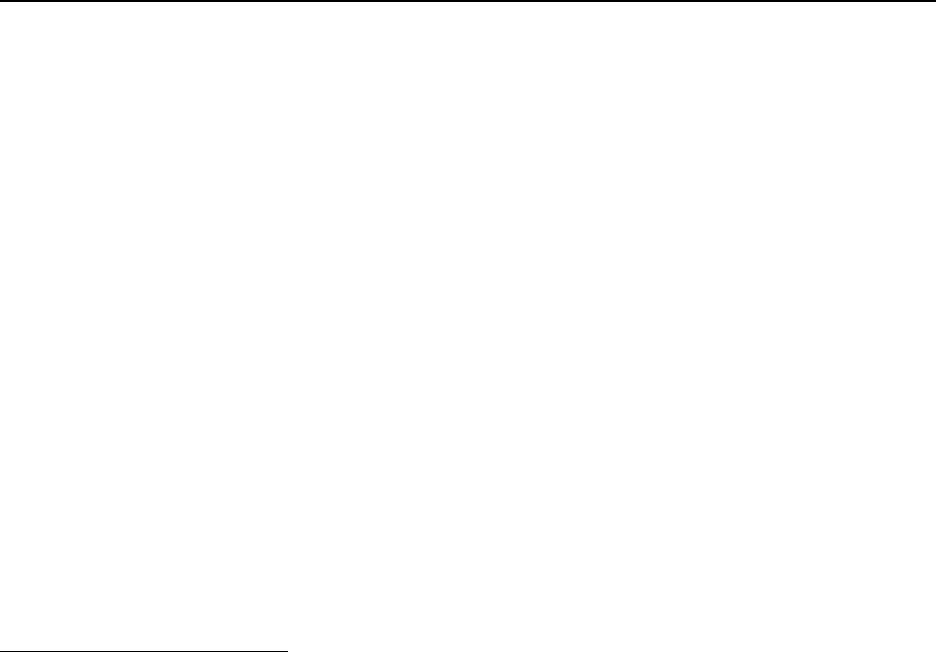
Federal Communications Commission FCC 24-69
9
21. First, ASUSTeK’s marketing of apparently noncompliant radio frequency devices was
intentional and therefore warrants a significant upward adjustment. The record reflects that by November
19, 2021, at the latest, ASUSTeK knew, through the lawsuit filed by ASUSTeK’s competitor, Netgear,
72
that the GT-AXE may have been operating in excess of its authorized power limits. Yet it continued to
market the GT-AXE for more than a year—until January 16, 2023. The Company’s further marketing of
this apparently noncompliant model demonstrates that its failure to comply with section 302(b) of the Act
and section 2.803 of the Commission’s rules was intentional, thereby supporting an upward adjustment
for the GT-AXE apparent violation.
73
22. Second, we propose an upward adjustment based on the Company’s prior conduct.
ASUSTeK has a history of violating section 302 of the Act and sections 2.803, 2.1043, and 15.407 of the
Commission’s rules, the same provisions that we are proposing to fine the Company for here. On August
6, 2014, ASUSTeK Computer entered into a consent decree with the Bureau resolving an investigation
that included almost identical violations as those in this investigation: marketing WiFi routers and
adapters that exceeded authorized power limits.
74
In that consent decree, ASUSTeK Computer admitted
the violations
75
and agreed to implement Operating Procedures “specifically designed to ensure . . . all
radio frequency devices to be marketed by ASUSTeK comply with applicable technical standards [and]
have been properly authorized . . . .”
76
An upward adjustment for each of the two apparent violations is
therefore warranted based on these prior violations.
77
23. Third, an upward adjustment to the proposed forfeiture is appropriate given ASUSTeK’s
repeated and continuous marketing of the noncompliant models. The investigation reveals that the
Company marketed the PCE-AC51 model from 2016 to 2023 and the GT-AXE model from 2021 to 2023,
and that the Company modified both models after receiving equipment authorizations for both models.
78
72
See supra para. 12.
73
Presidential Who’s Who DBA Presidential Who’s Who, Inc., Notice of Apparent Liability for Forfeiture, 26 FCC
Rcd 8989, 8994, paras. 12-13 (2011) (proposing an upward adjustment where the company continued violative
conduct “deliberately, given its disregard for the Commission’s previous warnings” after the company received a
citation and notices of apparent liability), Forfeiture Order, 29 FCC Rcd 3451 (2014); Rocky Mountain Radar,
Notice of Apparent Liability for Forfeiture, 22 FCC Rcd 1334, 1339, para. 14 (EB 2007) (proposing an upward
adjustment where the company intentionally continued marketing noncompliant devices following a citation and
failed challenge of the citation at the Commission and the U.S. Court of Appeals for the Tenth Circuit), Forfeiture
Order, 22 FCC Rcd 15174 (EB 2007); Ramko Distributors Inc., Notice of Apparent Liability for Forfeiture, 22 FCC
Rcd 7161, 7169, para. 23 (2007) (proposing an upward adjustment where company intentionally continued
marketing noncompliant devices following a citation); Pilot Travel Centers, LLC, Notice of Apparent Liability for
Forfeiture, 19 FCC Rcd 23113, 23117, para. 17 (2004) (proposing an upward adjustment where company
intentionally continued marketing noncompliant devices following nine citations and devices had the potential to
interfere with authorized devices), Order and Consent Decree, 21 FCC Rcd 5308 (2006).
74
See generally 2014 Consent Decree, supra note 2.
75
See id. at 9979, para. 8.
76
Id. at 9980, para. 12(a). Although the term of this consent decree was three years, ASUSTeK would have had no
reason to affirmatively undo operating procedures designed to ensure compliance with the Act and the
Commission’s rules at issue in that consent decree and in this case.
77
Cunningham Broadcasting Corporation, Notice of Apparent Liability for Forfeiture, 37 FCC Rcd 11042, 11048,
para. 17 (2022) (explaining that the Commission’s proposed forfeitures were warranted due to, inter alia, licensee’s
“lengthy history of prior offenses for similar violations”); Patrick Keane a/k/a The Street Map Co., Notice of
Apparent Liability for Forfeiture, 27 FCC Rcd 13757, 13762, para. 13 (2012) (providing a proposed maximum
penalty for target’s “egregious,” “intentional,” and “repeated,” violations, as well as “history of prior offenses”);
Union Broadcasting, Inc., Forfeiture Order, 19 FCC Rcd 18588, 18590, para. 10 (EB 2004) (explaining that prior
rule violations warranted an upward adjustment).
78
See supra paras. 9-10.
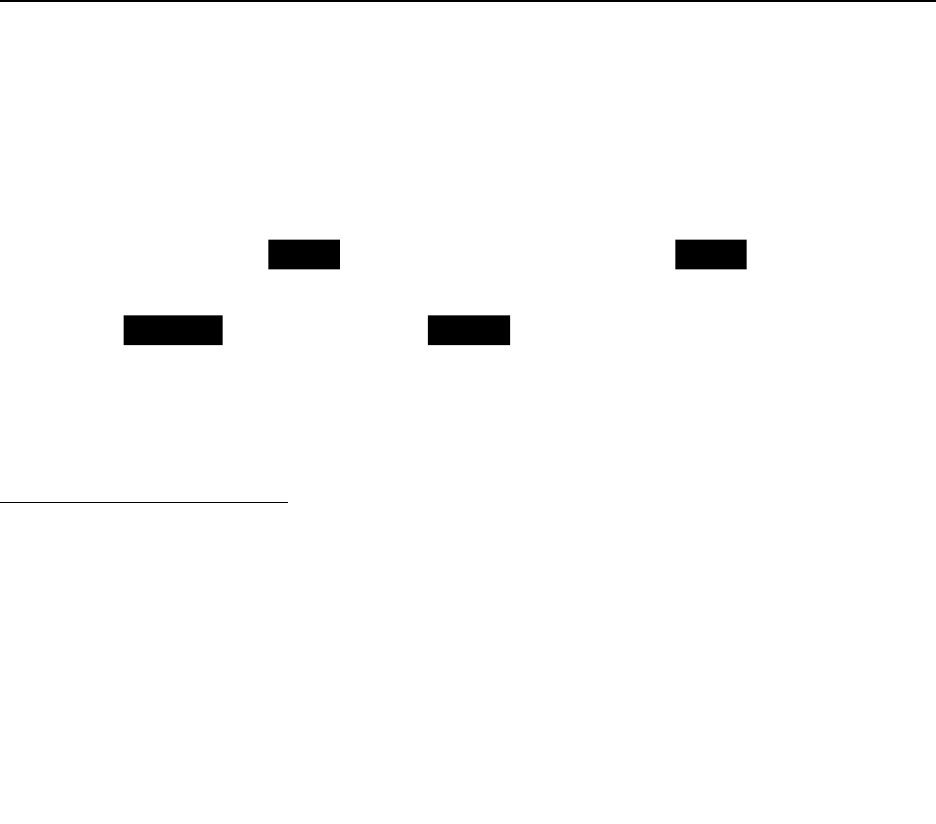
Federal Communications Commission FCC 24-69
10
This repeated and continuous noncompliant marketing also justifies an upward adjustment for each of the
two models.
79
24. Fourth, we propose a significant upward adjustment to account for ASUSTeK’s
substantial economic gain from both models. In recent investigations where the Commission has utilized
upward adjustments for this factor, it has generally looked at gross revenue from the sale of unauthorized
devices.
80
We do the same here. However, we also recognize that ASUSTeK also generated significant
gross profits.
81
For the PCE-AC51 model, ASUSTeK sold 3,281 noncompliant units in its last year of
sales with gross revenues of {[ ]} on these sales and gross profit of {[ ]}.
82
For the GT-
AXE model, ASUSTeK sold 4,495 noncompliant units between May 8, 2022 (the earliest date within the
statute of limitations)
83
and January 16, 2023 (date the Company stopped marketing the model) with gross
revenues of {[ ]} on these sales and {[ ]} in gross profit.
84
Accordingly we propose an
upward adjustment based on the substantial economic gain that ASUSTeK realized through the sale of
these noncompliant units.
25. Fifth, under section 503(b)(2)(E) of the Act, and as codified in section 1.80(b)(11) of our
rules, we must take into account a target’s ability to pay a forfeiture.
85
Here, an upward adjustment is
79
ABC Fulfillment Servs. LLC d/b/a Hobbyking USA LLC & Hobbyking.com; & Indubitably, Inc. d/b/a Hobbyking
Corp., Hobbyking USA LLC, Hobbyking, & Hobbyking.com, Notice of Apparent Liability for Forfeiture, 33 FCC
Rcd 5530, 5540–41, para. 22 (2018), affirmed, Forfeiture Order, 35 FCC Rcd 7441, 7442, para. 5 (2020) (upward
adjustment for repeated and continuous marketing of noncompliant devices for several years). Some apparent
violations are not actionable due to the expiration of the statute of limitations period, however, the Commission may
consider facts arising before the expiration date in determining an appropriate forfeiture amount for acts that
occurred inside of the statute of limitations period. See Enserch Corp., Forfeiture Order, 15 FCC Rcd 13551, 13554,
para. 11 (2000).
80
See, e.g., Pure Enrichment NAL, 33 FCC Rcd at 5458, para. 24 (explaining that the company earned $34.4M in
gross revenues in 2016 and finding that an upward adjustment for substantial economic gain was warranted due to
intentional conduct and gross revenues for the noncompliant models within a year of the release date of the NAL);
Behringer NAL, 21 FCC Rcd at 1827, para. 22 (upward adjustment for substantial economic gain was warranted due
to post-investigation total retail sales of unauthorized devices amounting to approximately $28.5 million).
81
See FLOI Response Supplement, supra note 16, Spreadsheet Exhibit 1.
82
See id.
83
See supra para. 12 and notes 34, 49 (discussing the applicable statute of limitations period for the GT-AXE
model).
84
See FLOI Response Supplement, supra note 16, Spreadsheet Exhibit 1.
85
47 U.S.C. § 503(b)(2)(E); 47 CFR § 1.80(b)(11); see Forfeiture Policy Statement, 12 FCC Rcd at 17099-17100,
paras. 23-24 (cautioning all entities and individuals that the Commission will take into account the violator’s ability
to pay in determining a forfeiture to guarantee that large or highly profitable entities do not consider forfeitures
merely an affordable cost of doing business, and noting that such entities should expect proposed forfeitures against
them to be well above the applicable base amount); Sound Around 2023 NAL, 2023 WL 8782439 at *9, para. 30
(explaining that an upward adjustment for ability to pay “is warranted to deter the Company from treating the
proposed fine as merely a cost of doing business”); Lumen Technologies, Inc., Notice of Apparent Liability for
Forfeiture, 2023 WL 8540521, *15, para. 53 (2023) (Lumen 2023 NAL) (explaining that the upward adjustment for
ability to pay is “to ensure that the forfeiture is an effective deterrent and not simply a cost of doing business” as
well as to “protect the interests of consumers and deter entities from violation the Commission’s rules.”); Viacom,
Inc., Forfeiture Order, 30 FCC Rcd 797, para. 22 (2015) (noting that an upward adjustment is appropriate in light of
Viacom’s reported annual revenues and the revenues of ESPN’s parent); Tesla Exploration, Inc., Notice of Apparent
Liability for Forfeiture, 27 FCC Rcd 9808, 9811, para. 10 & n.20 (2012), consent decree ordered Order and Consent
Decree, 31 FCC Rcd 844 (EB 2016); Union Oil Company of California, A Subsidiary of Chevron Corporation,
Notice of Apparent Liability for Forfeiture, 27 FCC Rcd 13806, 13810, para. 10 (2012), forf. paid; SM Radio, Inc.,
Order on Review, 23 FCC Rcd 2429, 2433, para. 12 (2008) (citations omitted); SBC Communications Inc., Order on
(continued….)
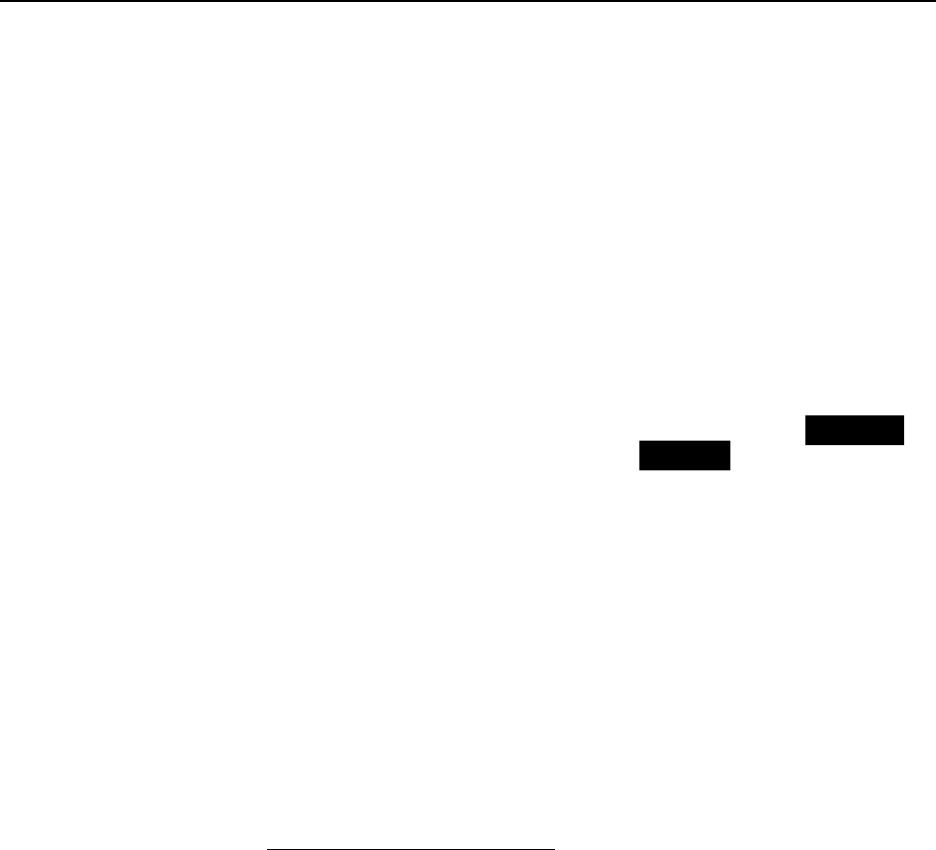
Federal Communications Commission FCC 24-69
11
warranted. Based on its financial documentation, ASUSTeK Computer and its affiliated companies,
including Asus Computer, had 2022 operating revenues of $17.2 billion (NT $537 billion), with gross
profits of $2.4 billion (NT $74 billion).
86
A significant upward adjustment of the base forfeiture amount
is warranted to ensure that the proposed forfeiture is an effective deterrent and not simply internalized by
ASUSTeK as a cost of doing business.
87
26. Adding the applicable upward adjustments together would produce a forfeiture amount
that significantly exceeds the $183,718 statutory maximum for each of the Company’s two apparent
equipment marketing violations. Accordingly, we propose significant upward adjustments for both
violations, but only to the statutory maximum of $367,436 ($183,718 x 2) for the two violations.
27. In applying the applicable statutory factors, we also consider whether there is any basis
for a downward adjustment of the proposed forfeiture. Here, we find none. Therefore, after applying the
Forfeiture Policy Statement, section 1.80 of the Commission’s rules, and the statutory factors, we propose
a total forfeiture of $367,436, the statutory maximum, for which ASUSTeK is apparently liable.
28. Finally, between 2022 and 2023, ASUSTeK generated gross revenues of {[ ]}
from the sales of two noncompliant models and gross profits of nearly {[ ]}.
88
These amounts
are well above the statutory maximum that can be calculated in this case applying the section 1.80 base
forfeiture amount of $7,000 “per model,” even with substantial upward adjustments. We are concerned
that continuing to use this method of calculating forfeitures in equipment marketing enforcement cases
may fail to yield an appropriate forfeiture amount commensurate with the seriousness of the violations.
This is particularly evident in cases such as the present one where gross revenues and even gross profits
greatly exceed the statutory maximum calculated under the current forfeiture methodology. We are
concerned that a per-model approach will incentivize companies to view the possibility of a Commission
forfeiture as merely a cost of doing business rather than a deterrent to violating our rules. Because the
“per-model” approach may be insufficient in a particular case, we note that, in future equipment
marketing cases, the Commission may change its methodology for calculating forfeitures in a way that
results in more appropriate, and often increased, forfeitures (for example, using a per-unit marketed
methodology or other approach). Changing forfeiture methodologies in this manner is consistent with
Commission precedent.
89
(Continued from previous page)
Review, 17 FCC Rcd 4043, 4052, para. 20 (2002) (“[A] large and highly profitable company . . . should expect . . .
that the forfeiture amount” may “be above, or even well above, the relevant base amount”).
86
See 2022 Annual Report, supra note 12, at 154 (stating 2022 operating revenues and gross profits).
87
See, e.g., Forfeiture Policy Statement, 12 FCC Rcd at 17098, para. 20 (1997) (recognizing the relevance of
creating the appropriate deterrent effect in choosing a forfeiture); see also 47 CFR § 1.80(b)(11), Table to paragraph
(b)(11) (identifying adjustment criteria for section 503 forfeitures).
88
See FLOI Response Supplement, supra note 16, Spreadsheet Exhibit 1; see also paras. 9, 12.
89
See Cesar Ayora and Luis Angel Ayora, Queens, New York, Notice of Apparent Liability for Forfeiture, 38 FCC
Rcd 2562, 2569, para. 15 (2023) (establishing a new base forfeiture for violations of the PIRATE Act), forfeiture
ordered, Forfeiture Order, 2023 WL 6843186 (2023); see also Lumen 2023 NAL, 2023 WL 8540521 at *13, para. 48
(establishing a new base forfeiture of $1,000 per failed 911 call and noting that “if we determine that $1,000 per call
does not appear to be a strong enough deterrent for carriers to comply with the Commission's 911 rules, we may in
future cases assess a larger per call amount”); Cunningham Broadcasting Corp., Notice of Apparent Liability for
Forfeiture, 37 FCC Rcd 11042, 11047, para. 13 (2022) (advising FCC regulated entities that “the Commission may
revise our approach to forfeiture calculations . . . in future cases”), forf. paid, by certain licensees; T-Mobile USA,
Inc., a subsidiary of T-Mobile US, Inc., Forfeiture Order, 29 FCC Rcd 10752, 10756-57, paras. 12-13 (2014)
(affirming the change in forfeiture methodology in the underlying notice of apparent liability and finding that the
same is not “inequitably retroactive”); Easy Tel. Servs. d/b/a Easy Wireless, Notice of Apparent Liability for
Forfeiture, 28 FCC Rcd 14433, 14438-39, para. 16 (changing the base forfeiture calculation methodology because
the “prior framework fails to reflect the extent and gravity of the alleged violations”) (2013), consent decree
(continued….)
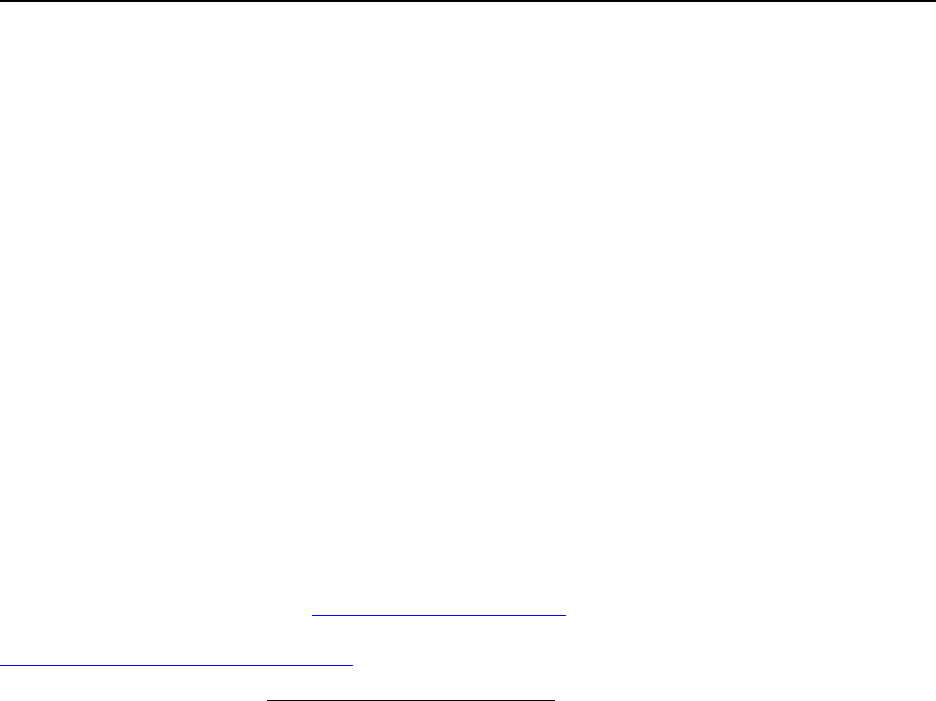
Federal Communications Commission FCC 24-69
12
IV. CONCLUSION
29. We have determined that ASUSTeK apparently willfully and repeatedly violated section
302(b) of the Act and sections 2.803, 2.1043(a), and 15.407(a)(5) of the Commission’s rules. As such,
ASUSTeK is apparently liable for a forfeiture of $367,436.
V. ORDERING CLAUSES
30. Accordingly, IT IS ORDERED that, pursuant to section 503(b) of the Act, 47 U.S.C. §
503(b), and section 1.80 of the Commission’s rules, 47 CFR § 1.80, ASUSTeK Computer, Inc. and Asus
Computer International are hereby NOTIFIED of this APPARENT LIABILITY FOR A
FORFEITURE in the amount of three hundred and sixty-seven thousand four hundred and thirty-six
dollars ($367,436) for willful and repeated violations of section 302(b) of the Act, 47 U.S.C. § 302a(b),
and sections 2.803(b), 2.1043(a), and 15.407(a)(5) of the Commission’s rules, 47 CFR §§ 2.803(b),
2.1043(a), and 15.407(a)(5).
31. IT IS FURTHER ORDERED that, pursuant to section 1.80 of the Commission’s rules,
47 CFR § 1.80,
90
within thirty (30) calendar days of the release date of this Notice of Apparent Liability
for Forfeiture, ASUSTeK Computer, Inc. and Asus Computer International SHALL PAY the full amount
of the proposed forfeiture or SHALL FILE a written statement seeking reduction or cancellation of the
proposed forfeiture consistent with paragraph 34 below.
32. In order for ASUSTeK Computer, Inc. and Asus Computer International to pay the
proposed forfeiture, ASUSTeK Computer, Inc. and Asus Computer International shall notify the
Spectrum Enforcement Division at EB-SED[email protected]
of their intent to pay, whereupon an
invoice will be posted in the Commission’s Registration System (CORES) at
https://apps.fcc.gov/cores/userLogin.do. Upon payment, ASUSTeK Computer, Inc. and Asus Computer
(Continued from previous page)
ordered, Order and Consent Decree, 32 FCC Rcd 10932 (2017); Regent U.S.A., Inc., Notice of Apparent Liability
for Forfeiture, 22 FCC Rcd 10520, 10526, para. 15 (2007) (warning that the Commission “may revisit and change
our approach if this forfeiture calculation methodology does not adequately deter future violations or as other
circumstances require”); Syntax-Brillian Corporation, Notice of Apparent Liability for Forfeiture, 22 FCC Rcd
10530, 10536, para. 15 (2007) (applying a new, sliding scale forfeiture methodology and noting that, “consistent
with the Act and precedent, we may impose more severe sanctions and/or utilize different forfeiture calculation
methodologies”) (citing Globcom, Inc. D/B/A Globcom Global Communications, Order of Forfeiture, 21 FCC Rcd
at 4723-25, paras. 37-38, 41 (2006) (warning that the Commission may again increase the forfeiture calculation
methodology if it “is not adequate to deter violations” and that “our statutory authority permits the imposition of
much larger penalties and we will not hesitate to impose them”)), forf. ordered, Forfeiture Order and Notice of
Apparent Liability for Forfeiture, 23 FCC Rcd 6323, 6332, para. 21 (2008) (finding that “[t]he [Administrative
Procedure Act] does not mandate that the Commission issue notice and request comment each time it proposes a
forfeiture or a forfeiture approach for rule violations not specifically contemplated at the time the Forfeiture Policy
Statement was adopted”).
The Commission has also recently issued notices of apparent liability warning that the Commission has the authority
to impose larger upward adjustments in future enforcement actions to more effectively deter noncompliance. See
Telco Experts, LLC, Notice of Apparent Liability for Forfeiture, 2024 WL 2699862, *12, para. 36 (2024) (putting
service providers “on notice that we are prepared to continue to impose higher upward adjustments in future
enforcement actions for prior violations and for repeated or continuous violations”); Stage 2 Networks, LLC, Notice
of Apparent Liability for Forfeiture and Order, 2023 WL 6119239, *12, para. 35 (2023) (“Given the accumulating
record on . . . non-compliance” the Commission is “prepared to impose substantially higher upward adjustments in
future enforcement actions”); Westel, Inc., Notice of Apparent Liability for Forfeiture and Order, 2023 WL
4682651, *8, para. 24 (2023) (stating that service providers “have been provided notice that the Commission could
impose substantially higher upward adjustments for prior violations and for repeated or continuous violations”);
Enhanced Communications Group, LLC, Notice of Apparent Liability for Forfeiture, 2023 WL 4587311, *17, para.
52 (2023) (same).
90
47 CFR § 1.80.
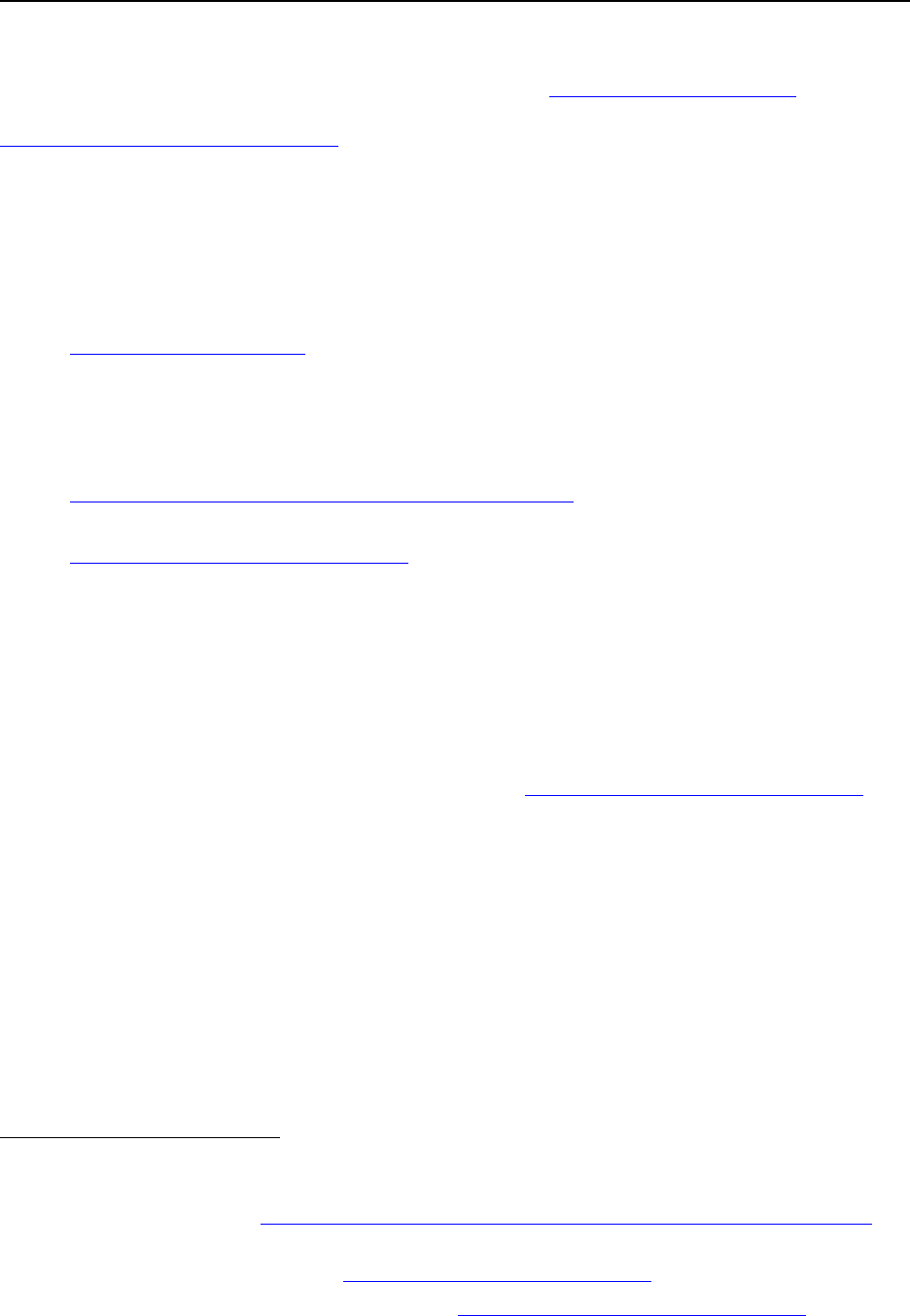
Federal Communications Commission FCC 24-69
13
International shall send electronic notification of payment to the Spectrum Enforcement Division,
Enforcement Bureau, Federal Communications Commission, at EB-SED-[email protected]
on the date
said payment is made. Payment of the forfeiture must be made by credit card using CORES at
https://apps.fcc.gov/cores/userLogin.do, ACH (Automated Clearing House) debit from a bank account, or
by wire transfer from a bank account. The Commission no longer accepts forfeiture payments by check
or money order. Below are instructions that payors should follow based on the form of payment
selected:
91
• Payment by wire transfer must be made to ABA Number 021030004, receiving bank
TREAS/NYC, and Account Number 27000001. In the OBI field, enter the FRN(s) captioned
above and the letters “FORF”. In addition, a completed Form 159
92
or printed CORES form
93
must be faxed to the Federal Communications Commission at 202-418-2843 or e-mailed to
RROGWireFaxes@fcc.gov
on the same business day the wire transfer is initiated. Failure to
provide all required information in Form 159 or CORES may result in payment not being
recognized as having been received. When completing FCC Form 159 or CORES, enter the
Account Number in block number 23A (call sign/other ID), enter the letters “FORF” in block
number 24A (payment type code), and enter in block number 11 the FRN(s) captioned above
(Payor FRN).
94
For additional detail and wire transfer instructions, go to
https://www.fcc.gov/licensing-databases/fees/wire-transfer.
• Payment by credit card must be made by using CORES at
https://apps.fcc.gov/cores/userLogin.do
. To pay by credit card, log-in using the FCC Username
associated to the FRN captioned above. If payment must be split across FRNs, complete this
process for each FRN. Next, select “Manage Existing FRNs | FRN Financial | Bills & Fees” from
the CORES Menu, then select FRN Financial and the view/make payments option next to the
FRN. Select the “Open Bills” tab and find the bill number associated with the NAL Acct. No.
The bill number is the NAL Acct. No. with the first two digits excluded (e.g., NAL 1912345678
would be associated with FCC Bill Number 12345678). After selecting the bill for payment,
choose the “Pay by Credit Card” option. Please note that there is a $24,999.99 limit on credit
card transactions.
• Payment by ACH must be made by using CORES at https://apps.fcc.gov/cores/userLogin.do. To
pay by ACH, log in using the FCC Username associated to the FRN captioned above. If payment
must be split across FRNs, complete this process for each FRN. Next, select “Manage Existing
FRNs | FRN Financial | Bills & Fees” on the CORES Menu, then select FRN Financial and the
view/make payments option next to the FRN. Select the “Open Bills” tab and find the bill
number associated with the NAL Acct. No. The bill number is the NAL Acct. No. with the first
two digits excluded (e.g., NAL 1912345678 would be associated with FCC Bill Number
12345678). Finally, choose the “Pay from Bank Account” option. Please contact the appropriate
financial institution to confirm the correct Routing Number and the correct account number from
which payment will be made and verify with that financial institution that the designated account
has authorization to accept ACH transactions.
33. Any request for making full payment over time under an installment plan should be sent
to: Chief Financial Officer—Financial Operations, Federal Communications Commission, 45 L Street,
91
For questions regarding payment procedures, please contact the Financial Operations Group Help Desk by phone
at 1-877-480-3201 (option #6).
92
FCC Form 159 is accessible at https://www.fcc.gov/licensing-databases/fees/fcc-remittance-advice-form-159.
93
Information completed using the Commission’s Registration System (CORES) does not require the submission of
an FCC Form 159. CORES is accessible at https://apps.fcc.gov/cores/userLogin.do
.
94
Instructions for completing the form may be obtained at http://www.fcc.gov/Forms/Form159/159.pdf.
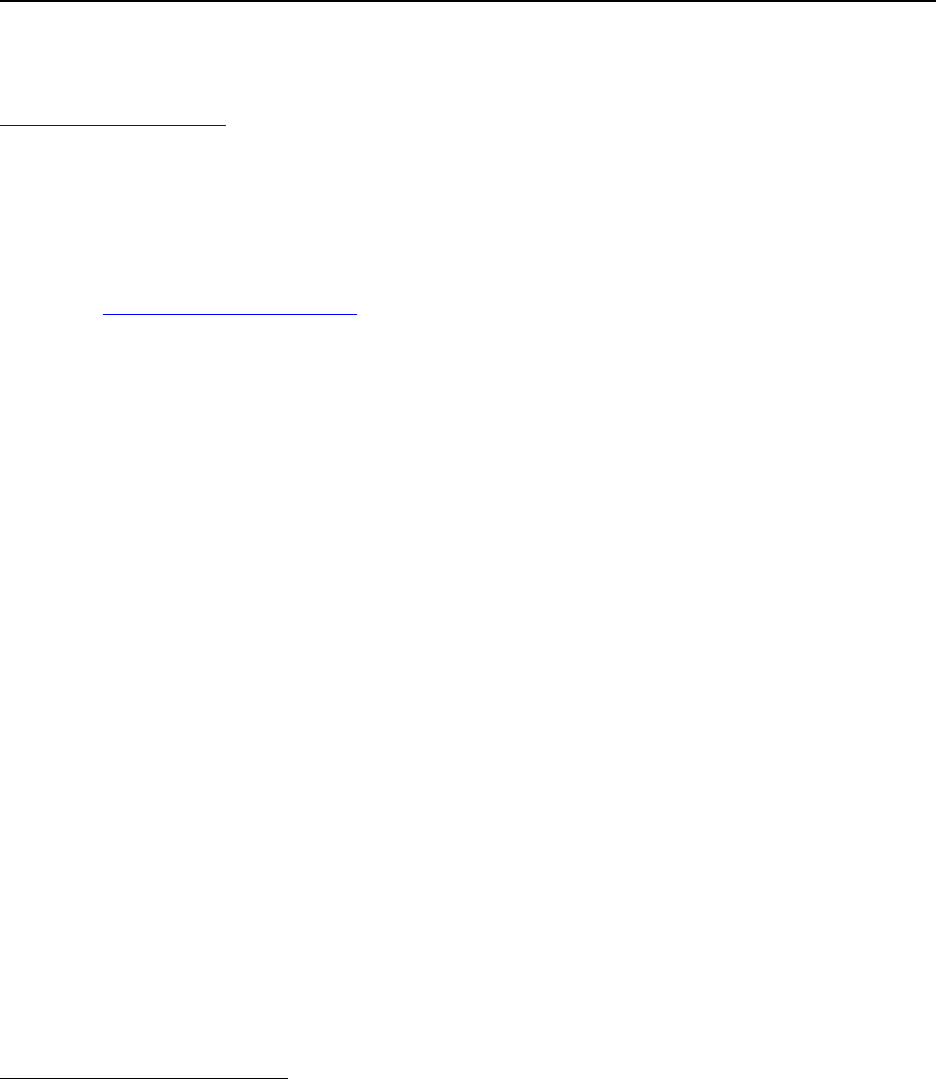
Federal Communications Commission FCC 24-69
14
NE, Washington, D.C. 20554.
95
Questions regarding payment procedures should be directed to the
Financial Operations Group Help Desk by phone, 1-877-480-3201, or by e-mail,
ARINQUIRIES@fcc.gov
.
34. The written statement seeking reduction or cancellation of the proposed forfeiture, if any,
must include a detailed factual statement supported by appropriate documentation and affidavits pursuant
to sections 1.16 and 1.80(g)(3) of the Commission’s rules.
96
The written statement must be mailed to the
Office of the Secretary, Federal Communications Commission, 45 L Street, NE, Washington, D.C. 20554,
ATTN: Enforcement Bureau – Spectrum Enforcement Division and must include the NAL/Account
Number referenced in the caption. The statement must also be e-mailed to the Spectrum Enforcement
Division at EB-SED-[email protected]
.
35. The Commission will not consider reducing or canceling a forfeiture in response to a
claim of inability to pay unless the petitioner submits the following documentation: (1) federal tax returns
for the past three years; (2) financial statements for the past three years prepared according to generally
accepted accounting practices; or (3) some other reliable and objective documentation that accurately
reflects the petitioner’s current financial status.
97
Any claim of inability to pay must specifically identify
the basis for the claim by reference to the financial documentation. Inability to pay, however, is only one
of several factors that the Commission will consider in determining the appropriate forfeiture, and we
retain the discretion to decline reducing or canceling the forfeiture if other prongs of 47 U.S.C. §
503(b)(2)(E) support that result.
98
36. IT IS FURTHER ORDERED that a copy of this Notice of Apparent Liability for
Forfeiture shall be sent by first class mail and certified mail, return receipt requested, to Jonney Shih,
Chairman, ASUSTeK Computer, Inc., 48720 Kato Rd., Fremont, CA 94538; Steve Chang, Co-CEO,
Asus Computer International, 48720 Kato Rd., Fremont, CA 94538; S.Y. Hsu, Co-CEO, Asus Computer
International, 48720 Kato Rd., Fremont, CA 94538; and to Matthew DelNero, Esq., Corey Walker, Esq.,
and Andrew Longhi, Esq., Covington & Burling LLP, One City Center, 850 Tenth Street, NW,
Washington, DC 20001.
FEDERAL COMMUNICATIONS COMMISSION
Marlene H. Dortch
Secretary
95
See 47 CFR § 1.1914.
96
Id. §§ 1.16, 1.80(g)(3).
97
47 U.S.C. § 503(b)(2)(E).
98
See, e.g., Ocean Adrian Hinson, Surry County, North Carolina, Forfeiture Order, 34 FCC Rcd 7619, 7621, para. 9
& n.21 (2019); Vearl Pennington and Michael Williamson, Forfeiture Order, 34 FCC Rcd 770, paras. 18-21 (2019);
Fabrice Polynice, Harold Sido and Veronise Sido, North Miami, Florida, Forfeiture Order, 33 FCC Rcd 6852,
6860-62, paras. 21-25 (2018); Adrian Abramovich, Marketing Strategy Leaders, Inc., and Marketing Leaders, Inc.,
Forfeiture Order, 33 FCC Rcd 4663, 4678-79, paras. 44-45 (2018); Purple Communications, Inc., Forfeiture Order,
30 FCC Rcd 14892, 14903-04, paras. 32-33 (2015); TV Max, Inc., et al., Forfeiture Order, 29 FCC Rcd 8648, 8661,
para. 25 (2014).

Federal Communications Commission FCC 24-69
15
STATEMENT OF
COMMISSIONER BRENDAN CARR
Re: In the Matter of ASUSTeK Computer, Inc.; Asus Computer International, Notice of Apparent
Liability for
Forfeiture.
I approve of today’s Notice of Apparent Liability. I write separately to note that I do not read this
item as
determining whether the FCC’s upward adjustment factor applies based on the line of business
relevant to the FCC’s enforcement action or based on a company’s entire operations. With respect to the
statement in the NAL that the FCC may change its forfeiture methodology in the future, I am open to the
FCC considering reasonable changes in the context of an appropriate Commission proceeding.
